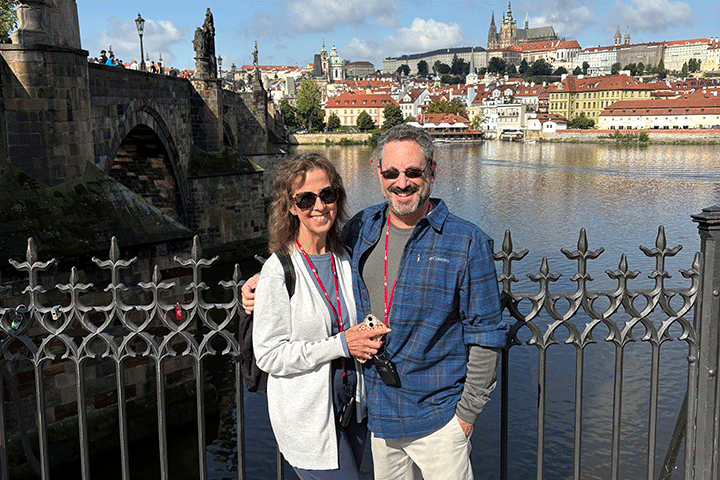My Whipple Surgery for Pancreatic Cancer

- Repeated gall bladder attacks lead to gall bladder surgery and discovery of a tumor
- Whipple surgery removes the tumor
- 50-year survivor
It was 1964 and it all started out with me having gall bladder attacks.
Over the next four years I had six attacks and was hospitalized three times. My doctor finally said to me that I had been fighting it long enough, why don’t I get my gall bladder taken out, and I said, “Let’s do it.” During the gall bladder operation at the Waukesha Hospital (Waukesha, Wisconsin) in May 1968, the doctors checked other nearby organs. They found a tumor on my pancreas, so they took a biopsy.
The doctor then told me that I needed more surgery and would be sent to the Mayo Clinic. At that time there were very few hospitals that did Whipple procedures—the Mayo Clinic, Johns Hopkins, and a couple of medical centers in the West. I didn’t mind going to the Mayo Clinic, but the doctors in Waukesha were not up front with me—they did not tell me that I had cancer. I didn’t find that out until I was on the cancer floor at Saint Mary’s Hospital (part of the Mayo Clinic) in Rochester, Minnesota.
Choosing a Then-Rare Operation
At that time, I had been working at the Waukesha Motor Company for 13 years. Before the surgery, the company airplane flew me from Waukesha to Rochester. I checked out of the Waukesha Memorial Hospital at 8 a.m. and checked in at Saint Mary’s Hospital at 11 a.m. At the Mayo Clinic they did 10 days of testing. After the test results came in, I had 10 doctors standing in a semi-circle around my bed (at Mayo they had five medical doctors and five surgical doctors on my case). These 10 doctors told me if I did not have the surgery, I can expect to live six to nine months and if I have the surgery, I may live another five years. This was the first time I ever heard the term “pancreatic cancer.” My response was “I came here for a reason, let’s get on with it.”
Within thirty minutes I was being prepped for Whipple surgery. On June 18, 1968 I was taken to surgery at 7 a.m.; I returned at 4 p.m. in the afternoon, experiencing the worst pain I ever had. The surgeons removed approximately one-half of the pancreas, one-half of my stomach, all of the duodenum, and also a large growth on the outside of my stomach. The normal stay for this surgery is 24 days and I was out of hospital in 12 days. The Mayo Clinic had never had anyone recover that quickly at that time.
Life After the Whipple Surgery
When I went in for the gall bladder surgery, I weighed 225 pounds. After having two surgeries in three weeks I weighed 155 pounds. After the Whipple, I had one side effect that lasted for 15 years. About five or six times a week I would get severe abdominal pain that lasted about 10 minutes, and the sweat would just pour off me. Eventually this side effect tapered off, happening with less frequency until it disappeared in 1983. Neither my doctors nor the ones at the Mayo Clinic could ever find a reason for it.
I was off work for four and a half months. I was still hurting when I went back to work, but a person can only watch so much TV and read so many magazines. I begged my doctor to let me go back to work.
At the present time, the five-year survival rate for pancreatic cancer is about 9 percent. The five-year survival rate information put out by PanCAN in about year 2000 was less than 1 percent. Back in 1968 the five-year survival rate must have been very slim.
I was 37 years old at the time of all the surgeries; I am 87 now. I used to get regular blood work once a year at my checkup, but in 2003 I developed type 2 diabetes so I get checkups every six months.
I worked for 40 years at the company now called Waukesha Engine Division. I have been a very fortunate person to have survived 50 years. I think it was a case of luck, for being in the right place at the right time.
More than 50 years after his pancreatic cancer diagnosis and Whipple procedure, Bob passed away from unrelated causes. He lived a long and fruitful life and we offer our deepest condolences to his family and friends.






